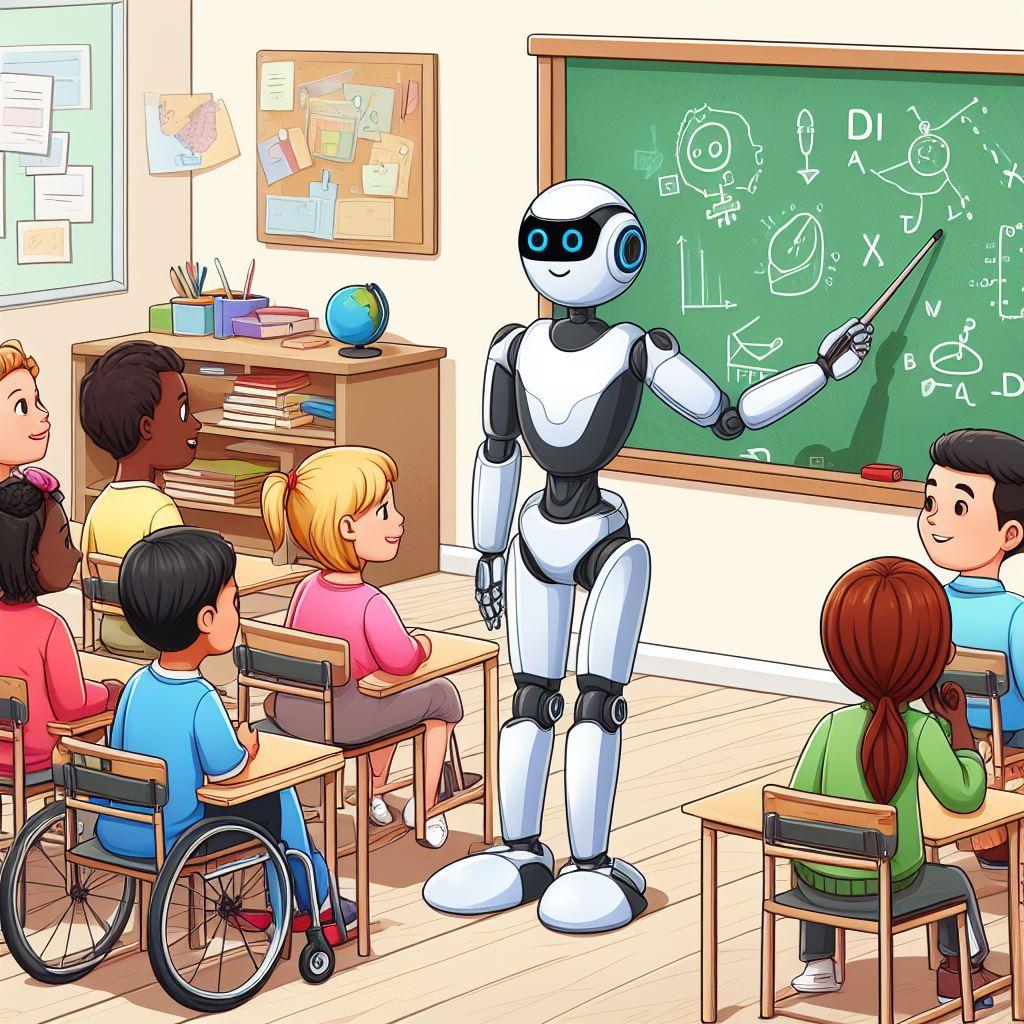Preparing educators: Effective Training Strategies for AI-Integrated Classrooms
Artificial Intelligence (AI) is transforming education, empowering teachers and students alike. However, to harness AI’s full potential in the classroom, educators must be thoroughly prepared with effective AI training strategies. This complete guide explores proven approaches for training educators, practical tips, real-world experiences, and more—equipping you to lead in tomorrow’s technology-rich classrooms.
The Importance of AI Training for Educators
With AI’s rapid advancement, classrooms are evolving at an unprecedented pace. From personalized learning platforms to clever tutoring systems, AI is redefining how teachers instruct and how students learn. Educators must not only understand how to use AI tools, but also grasp their pedagogical implications and ethical considerations. Investing in AI training for educators ensures:
- Effective integration of AI technologies into lesson plans
- Enhanced student engagement and personalized learning opportunities
- Improved classroom management with smart analytics
- Awareness of data privacy, security, and the responsible use of AI
Key Components of AI Educator Training Programs
Building a successful AI training program for teachers requires careful planning and inclusion of multiple components:
1. Foundational AI Literacy
- Introduction to AI concepts, terminology, and capabilities
- Exploring real-world applications in education
- Understanding machine learning, natural language processing, and adaptive learning systems
2. Hands-On Experience with AI Tools
- Practical workshops with popular classroom AI solutions (e.g., Chatbots, plagiarism detectors, student analytics platforms)
- Sandbox environments for safe experimentation
3. Pedagogical Integration Strategies
- Curriculum mapping to align AI tools with learning objectives
- Designing AI-powered lesson plans and assessments
- Best practices for blended and flipped classrooms using AI resources
4. Ethical and Privacy Considerations
- Understanding student data privacy laws (FERPA, GDPR)
- Ethical discussions around bias, openness, and fair use of AI
- Establishing clear guidelines for AI tool usage
5. Ongoing Support and Professional Learning Communities
- Access to mentors, peer networks, and online forums
- Continuous professional advancement webinars and workshops
- resource-sharing platforms for templates, lesson plans, and troubleshooting
Effective Training Strategies for AI-Integrated Classrooms
Implementing AI education for teachers is not a one-size-fits-all journey. Here are a few effective training strategies that ensure teachers not only learn, but thrive in AI-powered classrooms:
Blended Learning and Micro-Credentials
Combining self-paced online modules with in-person workshops allows educators to learn at their own speed while receiving direct support. Micro-credentialing,such as AI-specific badges and certificates,motivates participation and recognizes expertise.
Scenario-Based Learning
Presenting teachers with real classroom scenarios involving AI encourages practical problem-solving. Such as, handling AI-generated student work, mitigating algorithmic bias, or leveraging AI insights for differentiated instruction.
Peer Coaching and Collaborative Learning
Pairing educators together for peer coaching fosters a collaborative growth mindset. Sharing success stories and challenges in Professional Learning Communities (PLCs) enhances skill retention and mutual support.
Regular Feedback and Reflective Practice
Encouraging teachers to provide and receive ongoing feedback helps tailor training to their needs. Reflective journaling and classroom observations build deeper insights into successful AI integration.
Benefits of Preparing Educators for AI-Integrated Classrooms
Properly training teachers for AI-integrated classrooms brings tangible advantages:
- Personalized Instruction: Teachers learn to use AI to adapt lessons in real time based on student progress,boosting engagement and achievement.
- Data-driven Decisions: AI analytics provide actionable insights,helping educators identify learning gaps and tailor support.
- Administrative Efficiency: Automated grading, attendance, and reporting free up valuable teaching time.
- Accessibility Improvements: AI tools facilitate inclusive learning for students with disabilities through advanced speech, text, and vision technologies.
- Future-Ready Skills: Educators become leaders in innovation and digital citizenship within their schools and communities.
Practical Tips for Educators Embarking on AI Training
- Start Small: Integrate one AI tool at a time and build confidence before scaling up.
- Leverage Free Resources: Many educational organizations offer free webinars, toolkits, and MOOCs.
- Ask Questions: If unsure about implications or effectiveness, consult with IT staff or online communities.
- Monitor Outcomes: Track how AI impacts student outcomes—adjust strategies as needed.
- Stay Current: Subscribe to trusted AI in education newsletters to keep up with trends and research.
- Promote Digital Citizenship: Teach students about the ethical use of AI, including privacy and bias awareness.
Case Studies: Success Stories in AI-Integrated Educator Training
1. The Future-Ready Teachers Initiative (United States)
In a major school district,educators participated in a two-week summer bootcamp focused on AI literacy,scenario-based learning,and peer mentoring. Teachers reported greater confidence in integrating AI chatbots for student feedback and saw improved engagement—especially among struggling learners. Follow-up coaching ensured ongoing growth and sustainability.
2. Singapore’s national AI Literacy Program
Singapore rolled out a nationwide initiative to equip all educators with hands-on training in AI concepts and classroom applications. By forming expert-led PLCs and providing certification pathways, the program empowered teachers to innovate and share best practices, transforming student learning outcomes across diverse subjects.
First-Hand Experience: A Teacher’s Perspective
“at first,the idea of AI in my classroom felt overwhelming. But after completing a district-run training program, I learned step-by-step how to incorporate AI-powered assessments and personalize content for my students. The peer support network was a game-changer—whenever I faced challenges, I never felt alone. Now, I see firsthand how AI saves me time and empowers my students to learn at their own pace.”
— Sarah M., Middle School Science Teacher
Conclusion: Embracing a Future Powered by AI in Education
Preparing educators for AI-integrated classrooms is not just about technology adoption—it’s about fostering confidence, creativity, and adaptability in the teaching profession. By investing in robust, supportive AI training strategies for educators, schools ensure their teachers can lead effectively in a digitally enriched world. Start small, collaborate often, and stay informed: the future of education is here, and it’s powered by teachers embracing the promise of Artificial intelligence.
Are you ready to embark on your AI teaching journey? Explore top AI training resources for educators and join the movement towards smarter,more inclusive classrooms today!

